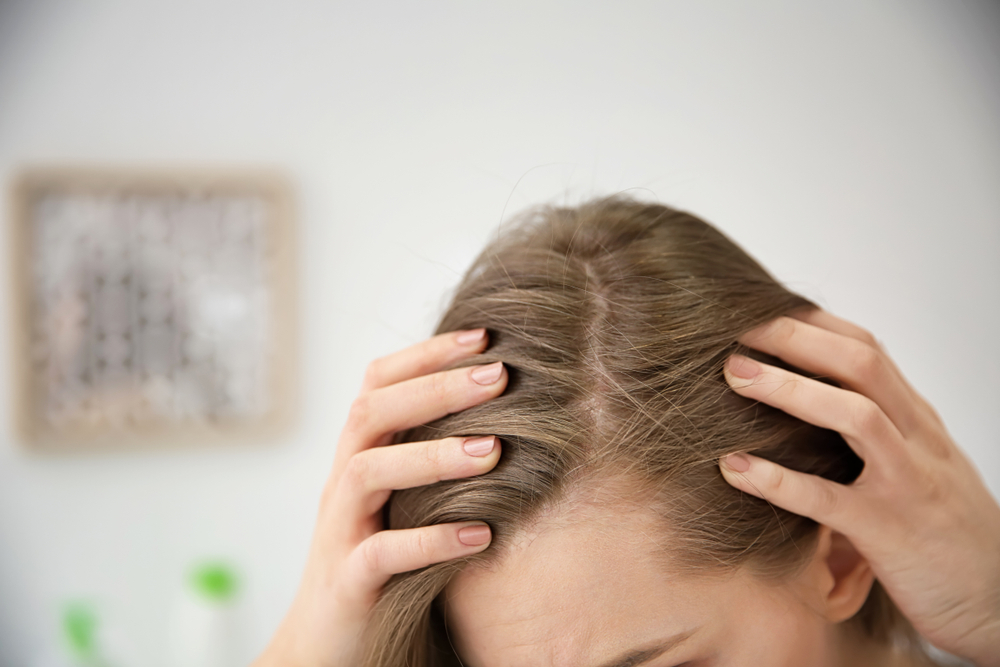While most people are familiar with the major consequences of drug use – malnutrition, weight loss, and sleep problems – there are a few lesser-known symptoms that may emerge over time. Hair loss is a condition that may be worsened by the use of certain drugs. Read on to learn more about the potential link between meth addiction and alopecia.
Drug-Induced Alopecia
Certain medications are known to cause alopecia; many people are familiar with hair loss following chemotherapy. However, many people may not think about alopecia triggered by illicit substances like methamphetamine.
Researchers analyzed this phenomenon by taking samples from cocaine, heroin, cannabis, and LSD users. They placed these hair follicles under a scanning electronic microscope (SEM). When compared to a healthy strand from a control subject, those of drug users were damaged, misshapen, or more fragile. Furthermore, it is possible to detect methamphetamine (and other stimulant drugs) through laser microscopy and immuno-histochemical staining. This means that ongoing substance use can impact the hair shaft in multiple ways, and that the results may remain over time. In many individuals, this means alopecia.
Alopecia: What Causes Hair Loss?
There are many reasons why meth use may lead to sudden or gradual hair loss.
First, stimulants like methamphetamine catalyze anxiety in habitual users. This can lead to nervous, fidgeting habits, which often include picking at one’s skin or pulling out hair. The more often hair is pulled out, the more damage is done to the follicle: its anchor to the scalp. Over time, this can increase one’s risk of permanent hair loss.
Also common is a lowered level of personal hygiene due to addiction. Those who are constantly obtaining, using, and recovering from meth do not focus on maintaining their appearances. They may not wash or brush their hair. This means that dead skin cells and stray strands are not regularly removed, which can result in scalp irritation, dandruff, itching, and damage to the hair follicle. Over time, this results in alopecia.
Finally, we must consider the chemical changes that take place in the body after a prolonged period of meth use. When a person’s organs are under this type of stress, they cannot maintain normal processes. This is why it is common for those undergoing severe stress – or whose organs are damaged – to shed hair. Furthermore, researchers have found that ongoing substance use may cause damage to keratin, the protein which makes hair strong, healthy, and shiny. Hair with damaged keratin is prone to breaking off or thinning.
Other Side Effects of Meth Use
Whether a person has become involved with crystal meth or other forms of methamphetamine, it is important to identify their problem quickly. This can help to speed up the recovery process and prevent further damage to the hair, skin, nails, and organs.
If you’ve already noticed signs of alopecia, look for some of the other physical indicators that a person is addicted to meth.
Sudden, extreme weight loss. Like most stimulants, this substance serves as an appetite suppressant and metabolism booster. Individuals who frequently use methamphetamine will often lose weight quickly and without explanation.
Damage to the skin. Dermatological signs are often among the first noticed by friends and family members. A person’s skin will appear dull, scabbed, or scarred.
Dilated pupils. If a person’s pupils are wide, even in bright light, it is possible that they are on this drug.
Tooth decay. Worsened personal hygiene combined with changes to the body’s salivary glands can result in a distinctive deterioration in one’s dental health.
Burns. Look for evidence of burns around the fingers or lips.
If you identify these signs in a loved one, you may feel frightened and concerned. Fortunately, comprehensive treatment for meth addiction is readily available.
Help for Meth Addiction
An addiction does not form overnight, and it takes time to heal. At Augustine Recovery, we provide long-term treatment for addiction to methamphetamine. Our gender-specific programming allows men and women to experience individual counseling, group therapy, and family involvement at our St. Augustine facilities.
To learn more about how to help your loved one access treatment in a positive, supportive environment, contact us today. Our admissions team will assist you in verifying insurance and developing a treatment plan for your family member.







